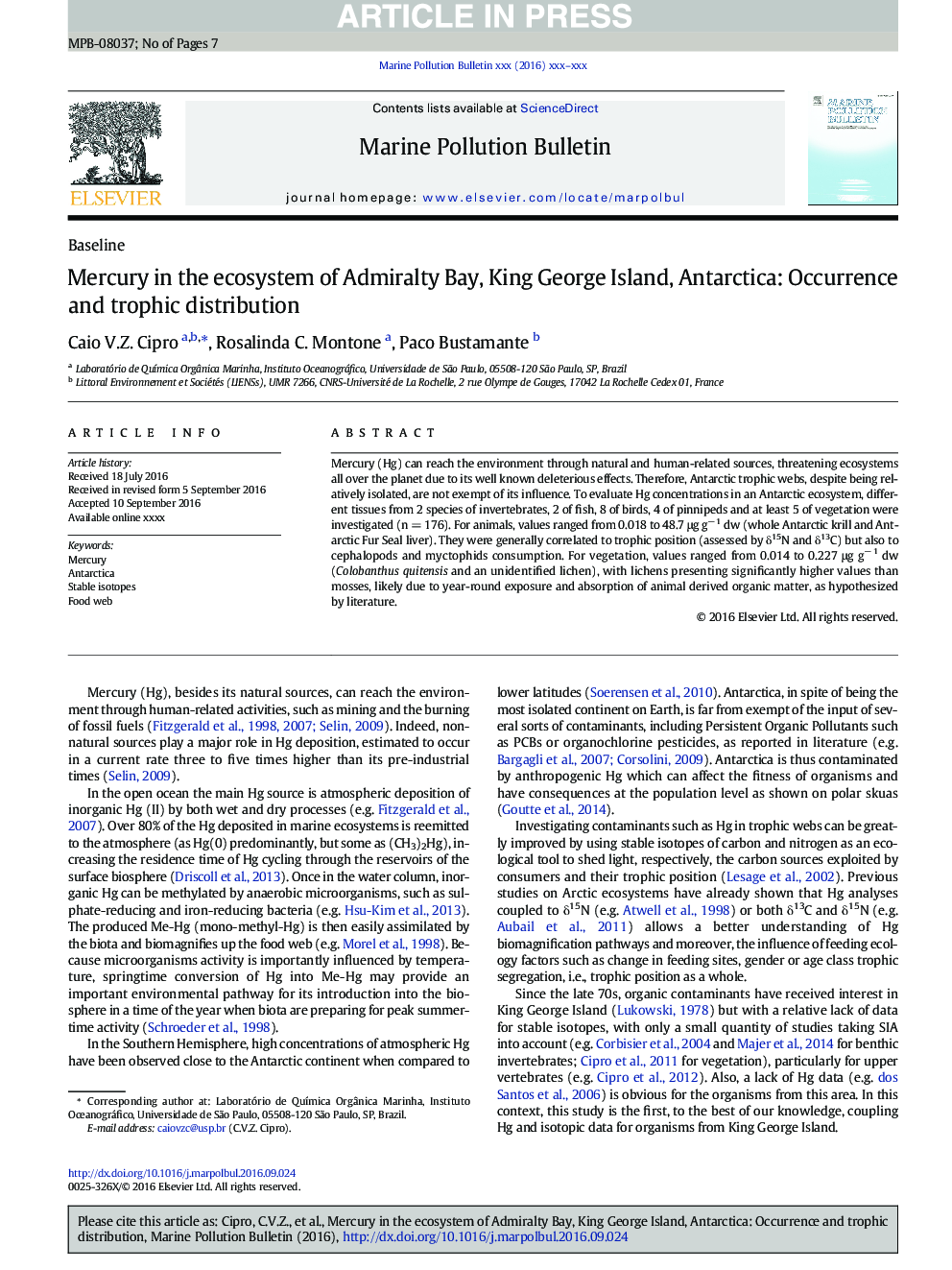| Article ID | Journal | Published Year | Pages | File Type |
|---|---|---|---|---|
| 5757818 | Marine Pollution Bulletin | 2017 | 7 Pages |
Abstract
Mercury (Hg) can reach the environment through natural and human-related sources, threatening ecosystems all over the planet due to its well known deleterious effects. Therefore, Antarctic trophic webs, despite being relatively isolated, are not exempt of its influence. To evaluate Hg concentrations in an Antarctic ecosystem, different tissues from 2 species of invertebrates, 2 of fish, 8 of birds, 4 of pinnipeds and at least 5 of vegetation were investigated (n = 176). For animals, values ranged from 0.018 to 48.7 μg gâ 1 dw (whole Antarctic krill and Antarctic Fur Seal liver). They were generally correlated to trophic position (assessed by δ15N and δ13C) but also to cephalopods and myctophids consumption. For vegetation, values ranged from 0.014 to 0.227 μg gâ 1 dw (Colobanthus quitensis and an unidentified lichen), with lichens presenting significantly higher values than mosses, likely due to year-round exposure and absorption of animal derived organic matter, as hypothesized by literature.
Related Topics
Physical Sciences and Engineering
Earth and Planetary Sciences
Oceanography
Authors
Caio V.Z. Cipro, Rosalinda C. Montone, Paco Bustamante,
